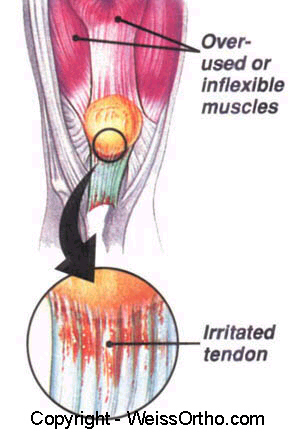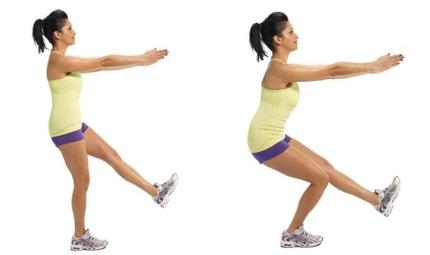The cool part about being in my second year of physical therapy school and continuing to coach is that I am constantly seeing new injuries arise with my kids. Each injury presents its own unique situation:
- They are rarely all caused in the same way.
- My athlete tells me about them at different stages of onset (I tell my kids to speak up but sometimes the stubbornness gets the best of them).
- They all react differently to treatments.
The one injury that has always scared me, mostly due to being uninformed, is patella tendonitis or tendinopathy. After one of our better runners started feeling something in his patella, I didn’t waste anytime learning everything I could to help him run pain free again.
OK, so you’re an athlete and you are having some pain under your knee cap and assume it may be your patella, what do you do?
Like most injuries, it is important to figure out what is causing the pain. I’ve heard that patella tendonitis is caused in many cases from overuse, but in this case my athlete was actually undertraining, so I knew it couldn’t be this. The patella is connected to the rectus femoris muscle (Quadricep) and my professor Mr. Phillips told me to check this muscle since he is only 15 years and has hit a growth spurt. It turns out that he was right, and his quad was very tight and was yanking on the patella so to speak.
We added many stretches to his repertoire but the stretch that gave him the most success (and happens to be my new favorite stretch) for the rectus femoris, is below.


Next, I learned about cross-friction massage for the patella tendon. NEVER did I think it was possible to dig into the tendon, but apparently it is a quite popular treatment! The inflammation of the patella tendon takes the what should be nice parallel lines (see below) and creates small microtears and irritation. 
By pulling the kneecap back and sliding your fingers/thumb into the space below the kneecap and above the tibial tuberosity (that bump below the knee) you now have access to the tendon. In a back and forth motion going against the tendon perpendicularly, you can essentially cause more inflammation which will cause a faster healing cycle. I would do this for 4-5 minutes, finding super tender spots and spending extra time there. My athlete was very sore after a few of these treatments, but a week later felt so much better!

I then continued to find tender spots as my athlete bent his knee slowly, causing the patella tendon to lengthen. This was to try to actively release any tension in the tendon. We would do this 6-8 times.
The other piece of the puzzle for him was strength. His quad was tight, but also was a bit weak. Strong quadriceps can prevent patella tendonitis from coming back again once it is gone. The four main strengthening exercises we have been doing have been during his treatment are forward/backward lunges, single leg squats, and regular air squats.




We also taped his knee using Rock Tape (KT Tape is garbage, I’m sorry I tried 5 different times and it fell off every time!) There are so many taping videos out there, but we used this pattern which provided great relief for my athlete.

Now, as a competitive athlete, all these things will not magically help patella tendonitis just go away. The BIGGEST key to helping my athlete keep this condition under control was rest. Some days we aqua-jogged in the pool, some days he ran for half the amount of time he normally would, and some days he did nothing. It is important to catch the discomfort early and not just run through it, this will make it much worse obviously!

Also, save for your advil/ibprofen and don’t waste it on the patella tendon. Research shows that anti-inflammatories (non-steroidal) have very little impact on patella tendonitis/tendinopathy.
I am excited to have expanded my knowledge on this topic and I look forward to helping future athletes deal with this condition moving forward!
Thanks for reading!
Dave
